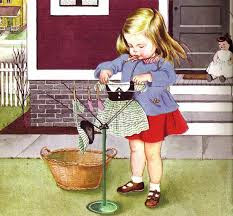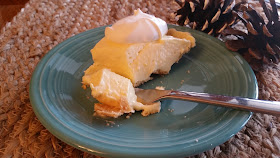I cleaned the coop this fall before the winter hit hard.
Looks like I need some more bedding on the floor.
You see I saved over two Rhode Island Reds as an experiment.
I wanted to see how many more eggs they would lay in their Old Age.
They've done pretty well.
Good egg production happening this morning!
We don't use all these nest boxes. I have the majority boarded up.
Some of the eggs are double-yolkers!
A young friend of mine who I give eggs to emailed me today with questions about why her friend's chickens aren't laying. I thought that it might be a good time to talk about keeping chickens in winter since this is a common problem for us up north who are facing extreme cold right now. It's hard on everything -- including chickens.
Here are some excerpts from my email:
Egg Laying Breeds:
There are really so many variables for chickens laying or not laying eggs. One of the first variables I think about is the breed of
chicken. Right now I've got Pearl White Leghorns which lay large, white eggs.
These are THE BREED for getting lots of eggs. They are the breed
commercial farms use because they are such good layers and they are one of the best converters. So you really are getting more bang for your buck -- when it comes to converting feed to eggs. There are
other breeds that are very good too like: Red Star and Black Star (sexlinks),
Rhode Island Red, Barred Rock, and Astralorp. One thing I'm trying is
to do from now on is to buy just one breed per year. This way when it comes time to replace hens every fall, we know which are the old hens and which are the pullets (young hens).
Oh, that reminds me....does your friend
have old hens? If she does, they will not lay on a regular
basis. I replace my hens every year. So the hens laying now were
just chicks back in April. That will make a huge difference in
egg production. The old hens will produce what we call JUMBO eggs, but they will not lay an egg a day like a young hen will.
Mixed Breed Flocks:
One thing that happens amongst mixed chickens is that sometimes they
will gang up on other breeds. Some of the more docile breeds end up being
picked on and some of the more aggressive breeds will beat up on others and/or
eat their eggs. I used to buy a variety of chickens, but the past
couple years, I've been buying just one breed. They all get along. A quiet coop is a happy coop which produces more eggs!
Feed:
One thing that really helps egg production is feed. High protein feed.
If you can get the hens to eat the Layer Pellet, you will win.
Sometimes chickens like it (mine do) and sometimes they don't. A trick my
MIL used to do was to make a mash out of it. She'd pour boiled water
over the pellet in a Cool Whip dish and carry it out to the chickens. You don't really have to have a Cool Whip dish, but you know -- a disposable dish is nice to leave at the coop. The hens loved to eat pellet that way and if that's the only way you can get them to eat layer pellet, do it. Wheat is a high protein feed you can add. I feed Hen Scratch which combines a little of everything and chickens like some variety. If your friend
can add scraps from the table, chickens always love that. It
keeps them "happy" and they look forward to you coming. I sometimes
grab a little clump of alfalfa hay and throw to them. They like
green stuff like lettuce, peas, and trimmings from your veggies. They will also eat meat scraps. Some people say you shouldn't feed meat scraps, but I do. Chickens will fight over it, they love it so much.
Temperature & Water:
Make sure the floor of the coop has plenty of bedding -- stray,
hay or wood shavings. If hens' feet are cold, they aren't
happy....just like us. Try to make the coop as draft-free as
possible so it can be as warm as possible. I do have a red heat lamp over the water bucket to keep it from
freezing. It really doesn't warm the coop much, but it keeps water available. During these cold, cold winters, I do NOT let my hens out of the coop.
When there is snow and ice on the ground, my girls stay indoors.
Remember about cold feet?
Hens have to have lots of water. If their water supply is freezing over,
they aren't getting enough water to make eggs. Eggs are something like 90% water. A tip to keep hens drinking: take out hot water every day. This way they have more drinkable (warm) water during cold days. The less energy a hen needs to stay warm, the better.
Light:
I do think the light from that heat bulb over the water bucket also keeps hens laying
through the winter. They need the light to stimulate the
pituitary gland to produce eggs. Even if your friend could add
one or two hours more light in the coop in the early morning or the evening, it
might help. If you are worried about fire, just put a regular light bulb in the coop and leave it on or put it on a timer. If your coop has windows, keep them as clean as you can so more light comes in.
Nesting Boxes & freezing eggs:
Mine are wooden. I've seen the metal ones (the friend has metal). I
don't think they should be a problem, but I can imagine that those
hens are kicking out the straw since it would be slippery and hens like to fluff up their nests. I saw
an idea where somebody took one of those small wash tubs and
cut part of the front out so the hens could enter and then added
hay, straw or wood shavings to it. It kept the nesting material in and made it easy to dump out and
clean too. That might be helpful.
With the cold we've been having, my eggs will freeze too. That
heat bulb doesn't really keep the coop warm, it just keeps the
water from freezing most of the time. Even then, the water gets
ice around the edges. When I know it's going to be below zero or
around 0*, I go get the eggs early -- before noon. Or they WILL
freeze in the nests. Then I might go check again in the evening before dark to see
if there are any more. My hens are usually all done laying before
noon, so that just makes it easy to go fetch the eggs and feed
& water them all at once -- particularly in winter months. The hens like to climb up to the roost early in winter.
Roost:
Chickens need a roost up off the floor. Here again, we're talking about warm feet. When they are off the cold floor or ground, their feet are warmer. Their bodies are warmer up off the ground too so that keeps our chickens happy! The less energy the chickens use to keep warm and happy, the more energy they can convert into eggs.
I hope this winter chickens post might help you and your hens if you are seeing a slow-down in egg production. It is a normal thing to have slower egg production in the dark and cold of winter, but it doesn't have to be this way. I am not a chicken expert or a chicken scientist. I'm just a ranchwife who has been raising chickens for 30+ years, and this is what works for me where I live in the wintry northern plains. Here's to More Eggs!



































